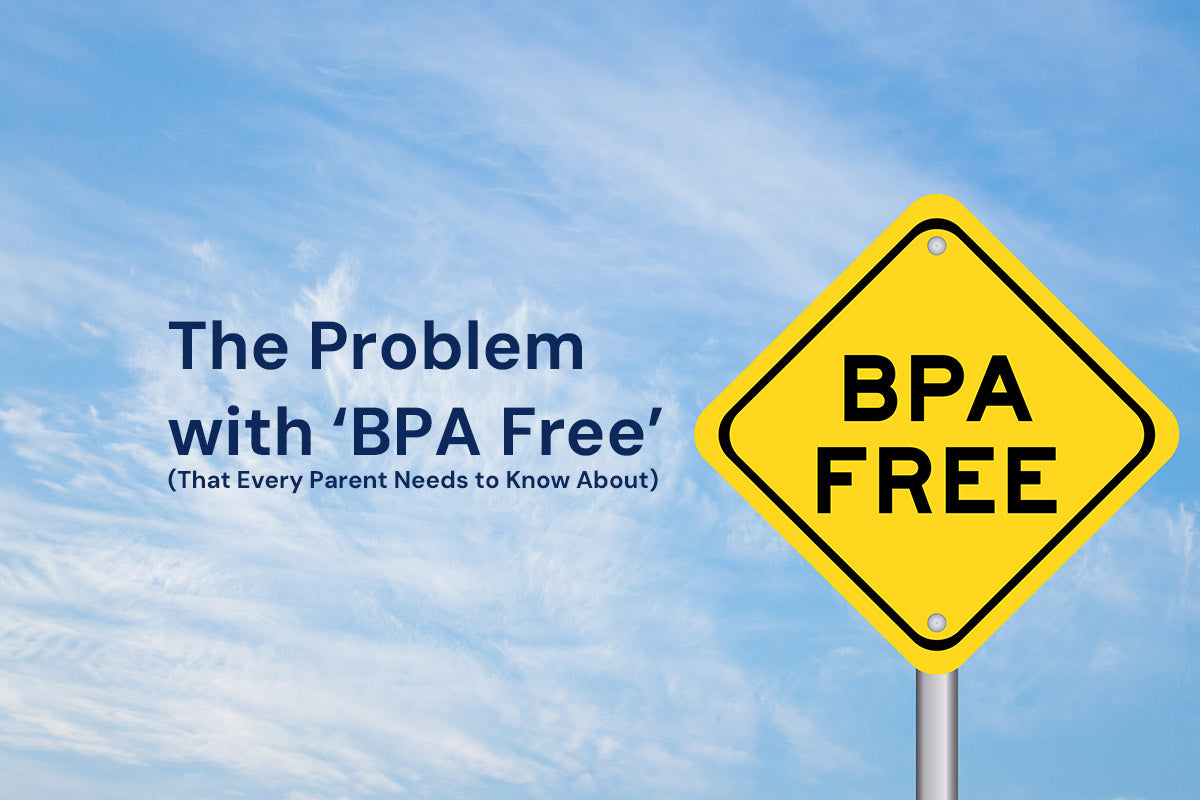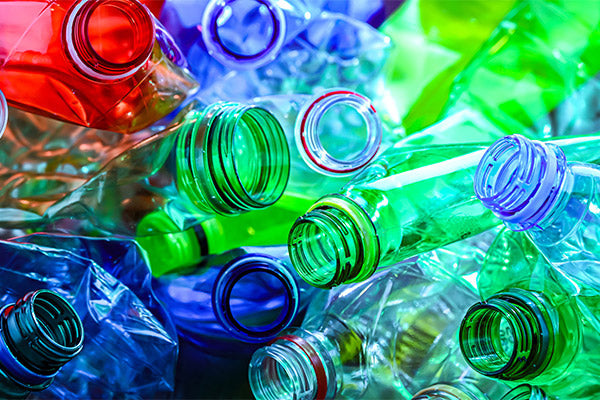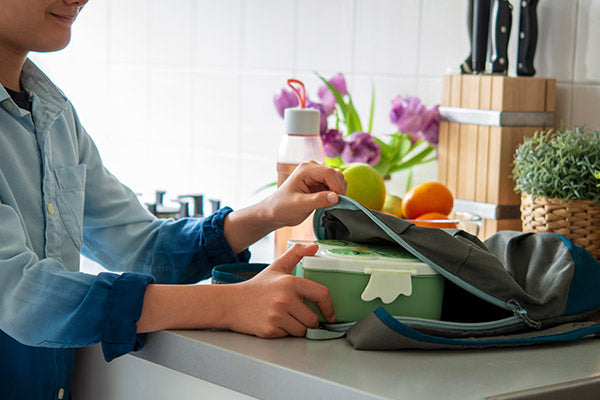The Problem with ‘BPA-FREE, That Every Parent Needs to Know About

BPA-Free labels are great! Right? Well, they do tell you which plastics you should definitely avoid… and that means you're safe, right? Unfortunately, this is far from the truth. The mark that a plastic is BPA-Free doesn’t actually assure your family’s safety from chemicals leaching out of your plastic products. That's because there are several other potentially harmful plastics and resins out there currently being used to replace BPA. Risky materials are often still used in things like water bottles, food storage containers, food and beverage cans, baby bottles, and even the lining inside infant formula cans! If you haven’t gasped yet, now is the time.
At Pura Stainless, concerns like these drive our core mission: to help you keep your family as safe as possible from commonplace household products that can be harmful. So, to help you understand your risks and spread awareness of this issue, we have started this discussion about what ‘BPA-Free’ really means and the dangers of ALL kinds of plastics. Plus, we are letting you in on what the actually safe options are for you and your family. So, keep reading to find out everything you need to know about these sketchy chemicals and the benefits of going plastic free.

Is the BPA-Free Label Safe?
So, we know that BPA has the potential to endanger your health and especially the health of your children. But does that mean that the BPA-Free label ensures your plastic items are safe? Unfortunately, no! Often, BPA-Free plastic is made of substitutes that have the potential to be equally if not more dangerous. This risk is especially high when it comes to other types of bisphenols such as BPS, BPF, BPB, BPZ and more. The use of these compounds are newer and, as a result, there is less available data to come to a decisive conclusion surrounding their risks. Ultimately, there isn’t significant research to prove that they are any safer than BPA. In fact, the existing evidence is proving it to be the opposite. Cue second gasp!
For example, in one study conducted with the help of a researcher from the U.S. Environmental Protection Agency in 2017, researchers exposed cells to BPA, BPS, BPF, BPAP, BPAF, BPZ and BPB. The result? All BPA swaps displayed estrogenic effects. BPAF, BPB, and BPZ even posed worse effects! That’s some scary stuff if you ask us!
The Truth About All Plastics
Dr. Nancy Wayne at the UCLA School of Medicine has done significant research on the effects of plastic on the endocrine system. Nancy warns that BPA-Free is a “marketing scam,” asserting that companies are swapping BPA-containing plastics for other dangerous plastics — all to boost their marketing. That means taking advantage of consumers' fears to drive sales of (still) unhealthy products, leading to more money in these companies' pockets instead of taking the more difficult, and expensive route of shifting away from using harmful materials altogether.
Just as concerning, many companies market their “sustainable” and “safer” products in misleading ways by highlighting their use of safe materials like stainless steel, glass, and silicone while proceeding to use petroleum based plastic for additional components of their bottles such as lids, handles, sip spouts, straw components, and even nipple collars and covers for infants! Not to mention, covering their steel bottles in pretty paints and powder coatings that are made of a not so pretty plastic-based endocrine disruptor.

How Did We Get Here?
You have likely already heard about the dangers of BPA, or Bisphenol-A, an industrial chemical and known endocrine disruptor that is often used in the manufacturing of plastic products and other common items. It’s power to potentially influence things like fetal development, puberty, reproductive processes, fertility, the metabolism, child behavior, cancer progression, and more has provoked a justified and widespread worry about chemicals leaching into the foods we eat and the beverages we drink — even, and especially, our water.
Exposure is as simple as touching worn or heated plastics and consuming food and drinks in plastic containers. Children often get exposed through hand-to-mouth or direct mouth contact with plastic items. However, the most notable concern is contact with plastics that have been exposed to high temperatures, which is known to significantly increase the quantity of harmful chemicals that are leached.
How to Avoid Harmful Plastics?
If you’re concerned, we know the feeling. In a typical American household, containers with plastic components are used daily for hot food or beverages, ending up in the microwave and the dishwasher. Even plastic straws with silicone tips and glass containers with plastic lids may seem safer than a 100% plastic product — at first. Until you realize, this too is a marketing scheme. They inevitably produce the exact same risks as a product made entirely of plastic. Even more concerning, children’s bottles need to be regularly cleaned, or sanitized at high temperatures — bottles that they bring to their mouths countless times everyday. We can’t forget, plastic lunch boxes and water bottles sit on school lunch tables on scorching hot days. You get the picture — and it’s not pretty!
If you have gasped more than a few times while reading this, or at least widened your eyes in shock, then you’re likely looking for a way to avoid plastics that very likely pose a health risk to you and your family. The American Academy of Pediatrics suggests that you can offer your children plastic free alternatives such as glass or stainless steel to avoid BPA, along with several other helpful ideas for how to reduce plastic use or exposure. Another great way to stay extra safe is to avoid canned foods and opt for foods packaged in cartons instead.

How to Avoid BPA (and Other Harmful Plastics)?
If you have gasped more than a few times while reading this, or at least widened your eyes in shock, then you’re likely looking for a way to avoid BPA and perhaps even the other, lesser known substitutes that may still pose a health risk to you and your family. The first thing to know is that you can detect BPA-containing plastic with the number seven written inside the recycling symbol. However, the American Academy of Pediatrics suggests that you can offer your children plastic free alternatives such as glass or stainless steel to avoid BPA, along with several other helpful ideas for how to reduce plastic use or exposure. Another great way to stay extra safe is to avoid canned foods and opt for foods packaged in cartons instead. If you decide to continue using plastics, you can limit exposure by avoiding heating them through microwaving, hot food and beverages, leaving them in the sun, or washing them in hot water.
Don’t Be Fooled
Keep in mind when doing your best to limit exposure that brands can be tricky with their marketing. You have to look carefully for justifications for their claims. Don’t be fooled by brands that avoid transparency and specificity about all of the components of their products. Know that PP, PP#5, polypropylene, and Tritan® are all names for plastics. Plus, we can’t forget the other hidden hazardous ingredients, such as the paint on many popular stainless steel water bottle brands. Harsh cleaning products, weather, temperature, humidity, ultraviolet (UV) rays, and salt water can all compromise powder coatings and put your family at risk for coming into contact with chipped paint.
Know that “BPA-Free” and “Toxin-Free” don’t mean plastic free. Even BPA-Free plastics leach endocrine disrupting by-products. Watch carefully for popular brands that use stainless steel or glass but shift the focus away from their plastic lids and straws that mingle with your family’s food and beverages with every use. Perhaps most poignant: dishwasher safe and microwave safe mean safe for the product,not safe for.

How to Find Safe Swaps?
If you are ready to start swapping your current hazardous items for safe and functional alternatives, “BPA-Free” water bottles and other household items are simply not going to cut it! 100% plastic free water bottles, toys, and kitchenware are by far the safest options. Look for brands that have no qualms about telling you exactly what is in every single component of their products, using “100% plastic free” and telling you that their products are made up of 100% stainless steel, medical grade silicone, glass — or a combination of those materials. Plus, be sure to avoid any products that contain nasty paints or powder coatings.
So, Is Any Plastic Worth the Risk?
After considering the myriad potential dangers of plastics, you may ask yourself whether it’s even worth the risk purchasing products that contain any petroleum-based ingredients. And if you were to ask us, we’d respond with a resounding NO.
And that’s precisely why Pura Stainless was established — to provide families with fun and truly safe products that are as pure as your little ones. Everything we do is to help families like yours have the information and resources they need to avoid dangerous materials and to live a healthier more sustainable life. That’s why our products are truly 100% plastic free and are made from 100% stainless steel and medical grade silicone. We opt for customizable silicone sleeves to add personality to our bottles as opposed to hazardous paints and powder coatings. Plus, each product has been rigorously tested and are all Made Safe certified.
We hope our explanation on the dangers of the BPA-Free label and the benefits of going plastic free help your family better understand the very real concerns of plastic use and what you can do to protect your family. For tips on introducing your family to the plastic free life, or for more information and tips on health, parenting, and sustainability, don’t hesitate to check back in with our blog. To make the switch to the only 100% safe, plastic free water bottle on the market, head to our website to shop now at https://www.purastainless.com/.
Sources:
- https://pubmed.ncbi.nlm.nih.gov/25813067/
- https://www.sciencedirect.com/science/article/abs/pii/S0890623813003456?via%3Dihub
- https://www.ncbi.nlm.nih.gov/pmc/articles/PMC7460848/#:~:text=Due%20to%20its%20hormone%2Dlike,by%20binding%20to%20androgen%20receptors.
- https://www.cdc.gov/biomonitoring/BisphenolA_FactSheet.html
- https://academic.oup.com/toxsci/article/158/2/431/3849675
- https://www.healthychildren.org/English/ages-stages/baby/feeding-nutrition/Pages/Baby-Bottles-And-Bisphenol-A-BPA.aspx?_gl=1*17019bf*_ga*Nzg3MjY4NDEwLjE3MDkxMzIxNjE.*_ga_FD9D3XZVQQ*MTcwOTEzMjE2MS4xLjEuMTcwOTEzMjM5OC4wLjAuMA.
- https://www.ncbi.nlm.nih.gov/pmc/articles/PMC7071457/
